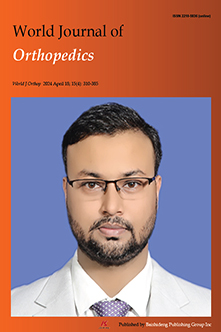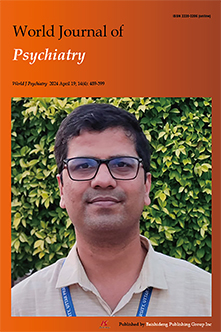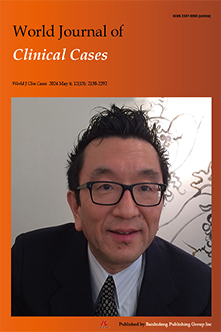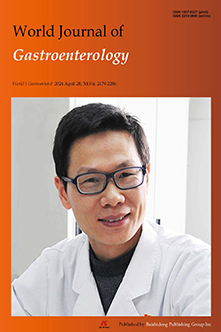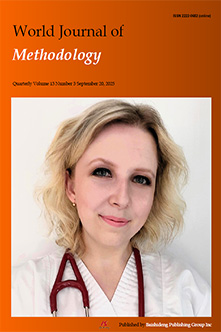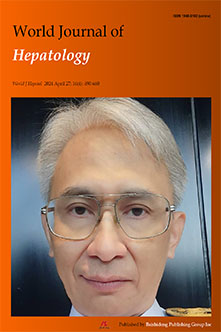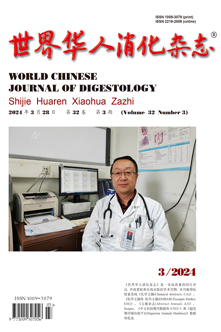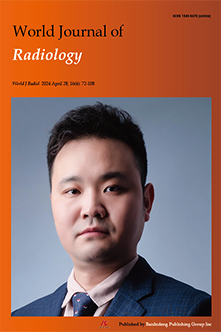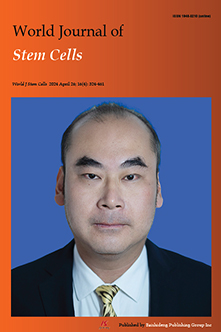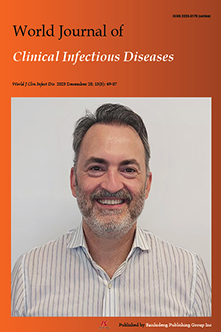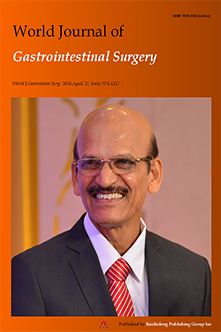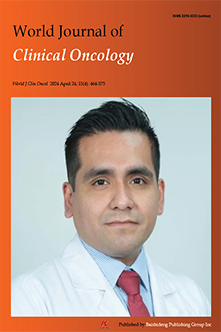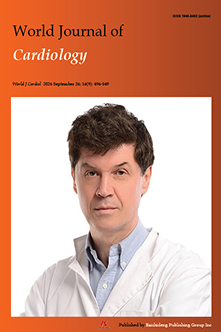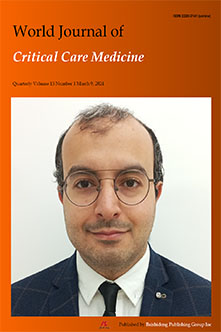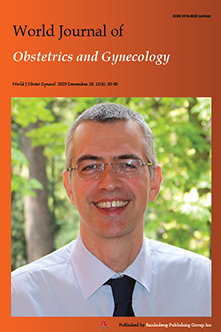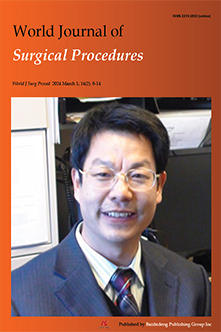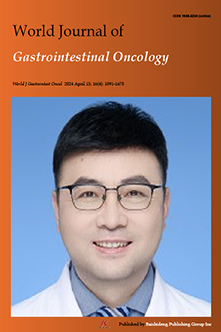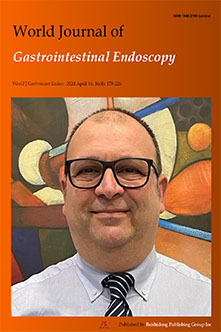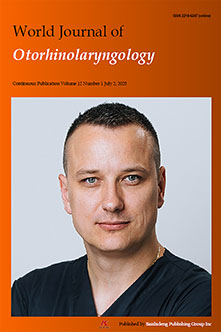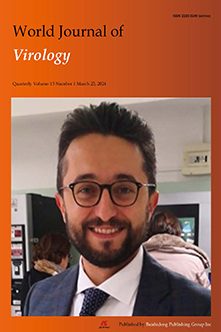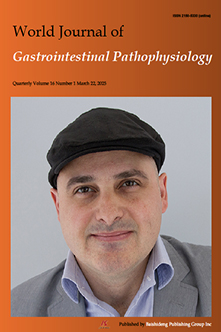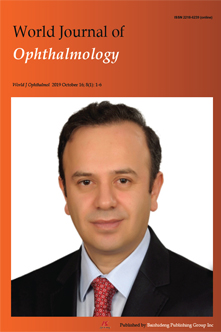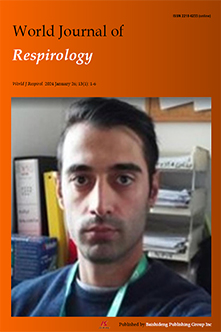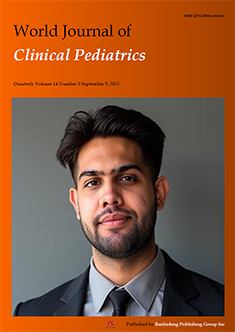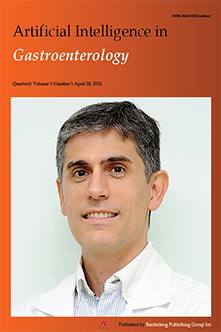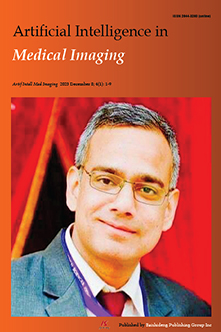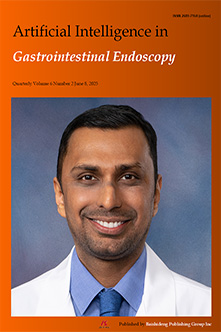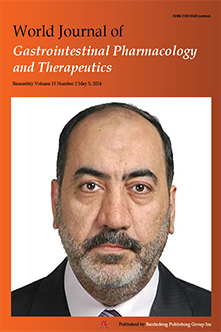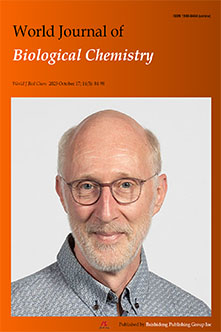Publisher Login
Manuscript Statistics
1
2
3
4
2025-08-08 | Browse: 0 | Download: 0
5
6
2025-08-08 | Browse: 2 | Download: 0
7
8
2025-08-08 | Browse: 1 | Download: 0
9
10
11
12
13
14
15
16
17
18
2025-08-08 | Browse: 0 | Download: 0
19
2025-08-08 | Browse: 2 | Download: 0
20
639 items Read more >>
1
"We sincerely thank the editors, reviewers, and the publishing team of the World Journal of Psychiatry for their constructive feedback, ..."
[Read more]
"We sincerely thank the editors, reviewers, and the publishing team of the World Journal of Psychiatry for their constructive feedback, professional guidance, and kind support throughout the review and publication process. Their valuable contributions greatly improved the quality of our manuscript and facilitated its successful publication. We look forward to future opportunities to contribute further research to the journal. "
[Collapse]
Zeng XW, Hu LF, Cao XL, Yang BR, Wu ZM. Fluctuating course of attention-deficit/hyperactivity disorder across development: Multifactorial influences. World J Psychiatry 2025; 15(8): 107780
2
"I would like to extend my sincere gratitude to the editors and the entire team behind this publication for their exceptional dedication ..."
[Read more]
"I would like to extend my sincere gratitude to the editors and the entire team behind this publication for their exceptional dedication and professionalism throughout the process. From manuscript submission to final production, every step was handled efficiently with clear communication. I particularly appreciate the attention to detail and collaborative spirit demonstrated by all involved, which significantly contributed to the smooth publication of my work. This experience has been highly positive, and I am thoroughly satisfied with the outcome. "
[Collapse]
Lei LL, Ge CJ, Wang H, Fang Y, Zeng L, Wang SL, Qian MC. Application and efficacy of quetiapine in patients with high-risk factors for bipolar disorder: A randomized controlled trial. World J Psychiatry 2025; 15(8): 104221
3
"We are highly satisfied with the submission, peer review, and publishing process of the World Journal of Psychiatry. The online ..."
[Read more]
"We are highly satisfied with the submission, peer review, and publishing process of the World Journal of Psychiatry. The online submission system was smooth and user-friendly. The peer review was timely, constructive, and objective, offering valuable feedback that significantly improved our manuscript. The editorial team ensured high-quality language editing, accurate table and figure preparation, and professional typesetting. The publication timeline was reasonable, and communication with the editorial office was prompt and clear. Overall, the process reflects the journal’s strong commitment to scientific rigor and author service. "
[Collapse]
Xu CH, Hu D, Lin HJ, Yang YD, Li MN, Shao LW. Medication literacy and treatment adherence in people living with human immunodeficiency virus: Mediating effects of psychosocial factors. World J Psychiatry 2025; 15(8): 107885
4
"I am very pleased with what this article and others have done for the publication process, from the editorial secretariat level up ..."
[Read more]
"I am very pleased with what this article and others have done for the publication process, from the editorial secretariat level up to the editor. I would also like to express my sincere gratitude to the carefully selected referees and all other staff members who contributed to this event. I will continue to write other beautiful articles and strive to get them published. "
[Collapse]
Metin İ, Özdemir Ö. Artificial intelligence in medicine: Current applications in cardiology, oncology, and radiology. World J Methodol 2025; 15(4): 106854
5
"We sincerely appreciate the efficient and professional handling of our manuscript by the editorial team and reviewers. The submission ..."
[Read more]
"We sincerely appreciate the efficient and professional handling of our manuscript by the editorial team and reviewers. The submission system was user-friendly, and the peer review process was thorough and constructive, which greatly improved our paper. The open-access model is also commendable as it maximizes the visibility of research. The editorial team demonstrated excellent communication throughout the publication process, addressing our inquiries promptly. The transparent sharing of peer review reports and editorial decisions further enhanced our confidence in the journal's rigorous standards. We are pleased with the overall experience and look forward to future collaborations with World Journal of Clinical Cases. "
[Collapse]
Mei ST, Li JJ. Effective application of an innovative acemannan-enriched glycolipid sphere dressing in diabetic foot ulcer wound healing: A case report and review of literature. World J Clin Cases 2025; 13(28): 109358
6
"Thanks for chief editor and peer viewers and language editor. This article can be published on time because of their hard working. ..."
[Read more]
"Thanks for chief editor and peer viewers and language editor. This article can be published on time because of their hard working. I truly admire your professionalism and dedication. The way you refined the language while preserving the original intent was remarkable. Your expertise not only improved the current work but also provided me with valuable insights for future writing. "
[Collapse]
Xu P, Ling SS, Hu E, Yi BX. Primary signet ring cell carcinoma of the female urethra: A case report. World J Clin Cases 2025; 13(27): 107158
7
"I wanted to take a moment to express my appreciation for the thoroughness and dedication demonstrated by your journal. It is clear ..."
[Read more]
"I wanted to take a moment to express my appreciation for the thoroughness and dedication demonstrated by your journal. It is clear that you go above and beyond to maintain high standards throughout every stage of the publication process. The level of detail and care you put into editorial and peer review reflects your strong commitment to ensuring only work of the highest quality is published. This not only upholds the reputation of the journal but also supports the advancement of the field. Thank you for your dedication to excellence. "
[Collapse]
Gupta AK, Surendranath A. Cholecysto-biliary fistula mimicking type 1 Mirizzi syndrome: A case report. World J Clin Cases 2025; 13(28): 108437
8
"The peer review process was efficient, professional, and constructive. The reviewers provided detailed and insightful comments that ..."
[Read more]
"The peer review process was efficient, professional, and constructive. The reviewers provided detailed and insightful comments that greatly improved the quality and clarity of the manuscript. The suggestions were highly relevant to the study design, data interpretation, and overall presentation. I truly appreciate the reviewers' efforts and the editorial team's timely communication throughout the process. "
[Collapse]
Wang Y, Tan ZY, He JM, Shu YX, Pan Z, Zhu DG, Wang J. Novel handheld pelvic alignment guide for hollow screw fixation in osteoporotic pelvic fragility fractures. World J Orthop 2025; 16(7): 107087
9
"We experienced a highly efficient and well-structured peer review process with the World Journal of Gastroenterology (WJG), which ..."
[Read more]
"We experienced a highly efficient and well-structured peer review process with the World Journal of Gastroenterology (WJG), which reaffirmed its stature as a respected journal in the field of medicine. This experience provided us with valuable insights into the process of scientific manuscript preparation and significantly contributed to our development as medical researchers. "
[Collapse]
Kim C, Lee HS, Na HY, Kwon HJ, Lee JA, Suh YS, Kang SH, Kim HH, Ahn SH, Oh HJ. Prognostic value of signet-ring cell carcinoma proportion in undifferentiated gastric cancer: Implications for endoscopic treatment decisions. World J Gastroenterol 2025; 31(30): 109465
10
"Dear Chief Editor and Esteemed Reviewers, Greetings of the day. Thank you so very much for publishing our manuscript in your ..."
[Read more]
"Dear Chief Editor and Esteemed Reviewers, Greetings of the day. Thank you so very much for publishing our manuscript in your prestigious PubMed Journal. We are very much obliged for the great efforts done by the reviewers, editors and the publication team. Their actions had greatly improved the overall scientific and academic quality of our manuscript upto highest international standards. Hopefully this unique manuscript will garner lots of citation in the scientific community. Thanks for the opportunity. Best Regards, Dr . Arvind Kumar Morya MS(Gold Medalist) MNAMS Additional Professor & Unit-I Head Cataract, Glaucoma, Refractive, Squint Paediatric Ophthalmology and Medical Retina Services Associate Editor UKJOS, National Advisor IJO,GJCSRO Editorial Board Member IJOVS, WJCC, EC-Ophthalmology, DOS Times, Journal of HOS. Reviewer Elsevier, AIMDR and IJO Clinical Trial Expert Panel - CDSCO & Ministry of Health and Family Welfare Convenor - AIOS Adverse Event Committee Department of Ophthalmology All India Institute of Medical Sciences, Bibinagar Hyderabad, Telangana -508126 INDIA +91-8003996598 "
[Collapse]
Morya AK, Behera RK, Gupta PC. Middle meningeal artery embolisation in chronic subdural hematoma: A double-edged sword. World J Clin Cases 2025; 13(28): 109364
11
"Dear Chief Editor and Esteemed Reviewers, Greetings of the day. Thank you so very much for publishing our manuscript in your ..."
[Read more]
"Dear Chief Editor and Esteemed Reviewers, Greetings of the day. Thank you so very much for publishing our manuscript in your prestigious PubMed Journal. We are very much obliged for the great efforts done by the reviewers, editors and the publication team. Their actions had greatly improved the overall scientific and academic quality of our manuscript upto highest international standards. Hopefully this unique manuscript will garner lots of citation in the scientific community. Thanks for the opportunity. Best Regards, Dr . Arvind Kumar Morya MS(Gold Medalist) MNAMS Additional Professor & Unit-I Head Cataract, Glaucoma, Refractive, Squint Paediatric Ophthalmology and Medical Retina Services Associate Editor UKJOS, National Advisor IJO,GJCSRO Editorial Board Member IJOVS, WJCC, EC-Ophthalmology, DOS Times, Journal of HOS. Reviewer Elsevier, AIMDR and IJO Clinical Trial Expert Panel - CDSCO & Ministry of Health and Family Welfare Convenor - AIOS Adverse Event Committee Department of Ophthalmology All India Institute of Medical Sciences, Bibinagar Hyderabad, Telangana -508126 INDIA +91-8003996598 "
[Collapse]
Sinha S, Nishant P, Morya AK, Sinha RK, Singh A. Intraocular pressure variation (ocular hypertension) in diabetes mellitus. World J Clin Cases 2025; 13(28): 107263
12
"We, the authors, have thoroughly reviewed the final version of this manuscript and confirm its accuracy, completeness, and adherence ..."
[Read more]
"We, the authors, have thoroughly reviewed the final version of this manuscript and confirm its accuracy, completeness, and adherence to the journal’s guidelines. We are fully satisfied with the content, presentation, and revisions made during the peer-review process. We appreciate the editorial team’s efforts and support and believe this work is now ready for publication in its current form. "
[Collapse]
Cen YY, Nong HY, Huang XX, Lu XX, Pu CH, Huang LH, Zheng XJ, Pan ZL, Huang Y, Ding K, Huang DY. Computed tomography-based deep learning and multi-instance learning for predicting microvascular invasion and prognosis in hepatocellular carcinoma. World J Gastroenterol 2025; 31(30): 109186
13
"We are honored to publish a manuscript in World Journal of Gastroenterology. Both journal's credibility and journal's peer review ..."
[Read more]
"We are honored to publish a manuscript in World Journal of Gastroenterology. Both journal's credibility and journal's peer review are professional and fair. To my surprise, the staff was very efficient throughout the submission process (with editor, under review, revision, decision and so on). Thanks to all editors and reviewers for their assistance throughout the publication process of this article. Best wishes to all of us. "
[Collapse]
Liu Y, Xiao Y, Ai LF, Zhang JJ, Zhang JD, Qi ZQ, Dong L, Wang YD. Serum metabolomic characteristics and their predictive value for ninety-day prognosis in patients with acute-on-chronic liver failure. World J Gastroenterol 2025; 31(30): 110401
14
"I would like to express my sincere appreciation for the exceptionally thorough and constructive peer review process. The reviewers ..."
[Read more]
"I would like to express my sincere appreciation for the exceptionally thorough and constructive peer review process. The reviewers demonstrated remarkable expertise in our field, providing insightful critiques that significantly enhanced both the scientific rigor and clarity of our manuscript. Their attention to detail helped refine key methodological aspects and strengthen the overall impact of our study. Particularly noteworthy was their ability to identify areas for improvement that we had overlooked, while respecting the study's original objectives. The editorial team deserves special recognition for their efficient coordination throughout the review process; their clear communication and prompt handling of revisions made the experience smooth and productive. This rigorous yet supportive process exemplifies why World Journal of Gastroenterology maintains high standards in our field. I am truly grateful for the opportunity to contribute to your esteemed journal. "
[Collapse]
Zeng XL, Zhu LJ, Zhang Y, Yang XD, Zhu YJ. Unveiling Xuanshen decoction: A novel approach to combat slow transit constipation. World J Gastroenterol 2025; 31(30): 109187
15
"Sincere thanks to the editorial department and the publishing house.From the submission of the initial draft to the final ..."
[Read more]
"Sincere thanks to the editorial department and the publishing house.From the submission of the initial draft to the final publication,the editors have always treated my manuscript with a rigorous and meticulous attitude.The peer review was highly objective and provided substantial assistance for my article.The F6Publishing system is very smooth to use. "
[Collapse]
Sun YT, Zhou F, Zheng HX, Xiao JD. Clinical efficacy and mechanism of Bletilla striata and Chinese herbal compounds in treatment of peptic ulcer. World J Gastroenterol 2025; 31(30): 110145
16
"As the authors, we believe this case report highlights the potential of ultrasound-guided platelet-rich plasma (PRP) injections in ..."
[Read more]
"As the authors, we believe this case report highlights the potential of ultrasound-guided platelet-rich plasma (PRP) injections in managing post-traumatic lumbar myofascial pain syndrome. The comprehensive assessments conducted throughout the study validate the notable improvements in pain relief, functional recovery, and restored muscle symmetry, while the detailed 6-month follow-up data further support the reliability of our findings. We would like to express our sincere gratitude to the editorial team for their meticulous handling of our manuscript and to the reviewers for their insightful and constructive comments. Their professional guidance has been invaluable in refining the presentation of this innovative intervention, helping us strengthen the scientific rigor of our work and ensuring it contributes meaningfully to the field of myofascial pain syndrome research. "
[Collapse]
Ai SL, Xiang XN, Yu X, Li N, Zhang XY, Zhang KB, Jiang HY, Wang Q, He HC. Ultrasound-guided platelet-rich plasma injection improves pain, function and symmetry in lumbar myofascial pain syndrome: A case report. World J Clin Cases 2025; 13(27): 108998
17
"The peer review during this submission process was highly efficient and provided me with review comments very quickly. The editor ..."
[Read more]
"The peer review during this submission process was highly efficient and provided me with review comments very quickly. The editor is also very conscientious and responsible. The responses to emails are very timely and accurate. I hope that if there are suitable manuscripts next time, they can also be published in this journal. "
[Collapse]
Wang GC, Chen JX, Pan HF, Ye K, Guo YC, Huang Y. Long-term efficacy and short-term outcomes of intersphincteric resection vs abdominoperineal resection in patients with ultra-low rectal cancer. World J Gastroenterol 2025; 31(29): 110004
18
"Dear Chief Editor and Esteemed Reviewers, Greetings of the day. Thank you so very much for publishing our manuscript in your ..."
[Read more]
"Dear Chief Editor and Esteemed Reviewers, Greetings of the day. Thank you so very much for publishing our manuscript in your prestigious PubMed Journal. We are very much obliged for the great efforts done by the reviewers, editors and the publication team. Their actions had greatly improved the overall scientific and academic quality of our manuscript upto highest international standards. Hopefully this unique manuscript will garner lots of citation in the scientific community. Thanks for the opportunity. Best Regards, Dr . Arvind Kumar Morya MS(Gold Medalist) MNAMS Additional Professor & Unit-I Head Cataract, Glaucoma, Refractive, Squint Paediatric Ophthalmology and Medical Retina Services Associate Editor UKJOS, National Advisor IJO,GJCSRO Editorial Board Member IJOVS, WJCC, EC-Ophthalmology, DOS Times, Journal of HOS. Reviewer Elsevier, AIMDR and IJO Clinical Trial Expert Panel - CDSCO & Ministry of Health and Family Welfare Convenor - AIOS Adverse Event Committee Department of Ophthalmology All India Institute of Medical Sciences, Bibinagar Hyderabad, Telangana -508126 INDIA +91-8003996598 "
[Collapse]
Kaur R, Morya AK, Gupta PC, Aggarwal S, Menia NK, Kaur A, Kaur S, Sinha S. Artificial intelligence-based apps for screening and diagnosing diabetic retinopathy and common ocular disorders. World J Methodol 2025; 15(4): 107166
19
"Dear Chief Editor and Esteemed Reviewers, Greetings of the day. Thank you so very much for publishing our manuscript in your ..."
[Read more]
"Dear Chief Editor and Esteemed Reviewers, Greetings of the day. Thank you so very much for publishing our manuscript in your prestigious PubMed Journal. We are very much obliged for the great efforts done by the reviewers, editors and the publication team. Their actions had greatly improved the overall scientific and academic quality of our manuscript upto highest international standards. Thanks for the opportunity. Best Regards, Dr . Arvind Kumar Morya MS(Gold Medalist) MNAMS Additional Professor & Unit-I Head Cataract, Glaucoma, Refractive, Squint Paediatric Ophthalmology and Medical Retina Services Associate Editor UKJOS, National Advisor IJO,GJCSRO Editorial Board Member IJOVS, WJCC, EC-Ophthalmology, DOS Times, Journal of HOS. Reviewer Elsevier, AIMDR and IJO Clinical Trial Expert Panel - CDSCO & Ministry of Health and Family Welfare Convenor - AIOS Adverse Event Committee Department of Ophthalmology All India Institute of Medical Sciences, Bibinagar Hyderabad, Telangana -508126 INDIA +91-8003996598 "
[Collapse]
Nishant P, Singh A, Morya AK, Alam MA, Sinha S. Manual small incision cataract surgery: An ergonomic solution to tackle cataract backlog and challenging situations. World J Methodol 2025; 15(4): 104529
20
"We have read the online full-text article. We are satisfied with the editing quality of the article, the published articles processes, ..."
[Read more]
"We have read the online full-text article. We are satisfied with the editing quality of the article, the published articles processes, the rigorous review process and the patient communication of World Journal of Gastroenterology. We will continue to submit new manuscripts in the future and recommend our peers to contribute manuscripts. "
[Collapse]
Zhang L, Bai CZ, Shan JY, Xue HL, Zheng SM, Chen YL, Tang SH. Flotillin-1 promotes the progression of hepatocellular carcinoma by activating TFE3-mediated Golgi stress response via inhibition of mTORC1/2. World J Gastroenterol 2025; 31(29): 106895
19226 items Read more >>
1
"ESD is a very effective procedure for early-stage gastric cancer, but there are cases where metastasis occurs. The author ..."
[Read more]
"ESD is a very effective procedure for early-stage gastric cancer, but there are cases where metastasis occurs. The author scientifically examined many cases and came to the following conclusions, making this a very good paper.
A higher SRCC proportion is associated with smaller tumor size, less advanced T stages, fewer nodal or distant metastases, and reduced lymphatic, venous, and neural invasion. Particularly, the SRCC proportion in EGC should be validated as a significant factor in therapeutic approaches, including ESD.
"
[Collapse]
Kim C, Lee HS, Na HY, Kwon HJ, Lee JA, Suh YS, Kang SH, Kim HH, Ahn SH, Oh HJ. Prognostic value of signet-ring cell carcinoma proportion in undifferentiated gastric cancer: Implications for endoscopic treatment decisions. World J Gastroenterol 2025; 31(30): 109465
2
"The letter to the editor by Dimirli Atici S et al entitled "Integrating inflammation, nutrition, and artificial intelligence: A new ..."
[Read more]
"The letter to the editor by Dimirli Atici S et al entitled "Integrating inflammation, nutrition, and artificial intelligence: A new era in colorectal cancer prognostic scoring" World J Gastroenterol 2025; 31(30): 108431 [DOI: 10.3748/wjg.v31.i30. 108431] discusses a critical issue for the coming years. These methods can help improve the prediction of survival in patients with CRC by increasing the rate of application of personalized treatments. The method discussed by the authors involves the integration of biochemical markers with artificial intelligence and is expected to significantly improve the quality of therapeutic decisions, thereby improving patient outcomes.
Medical science is a field in which artificial intelligence already offers a lot, and is expected to offer even more in the coming years. Of course, it is not likely to replace the decisions of the therapeutic team responsible for managing patients with CRC, but it will significantly help in making the right decisions. In my opinion, the period we are currently experiencing is likely to be a milestone for the future of medical science.
"
[Collapse]
Demirli Atici S, Canda AE, Terzi MC. Integrating inflammation, nutrition, and artificial intelligence: A new era in colorectal cancer prognostic scoring. World J Gastroenterol 2025; 31(30): 108431
3
"In this manuscript, the authors aimed to clarify the efficacy of measuring core-fucosylated low-molecular-weight kininogen (LMWK-Fc) ..."
[Read more]
"In this manuscript, the authors aimed to clarify the efficacy of measuring core-fucosylated low-molecular-weight kininogen (LMWK-Fc) for screening patients with liver fibrosis from normal volunteers. Although the performance in distinguishing between cases with and without fibrosis is largely affected by the distribution of fibrosis levels in patients with liver diseases, no data are provided showing this distribution. While the authors claimed that the correlation between LMWK-Fc and liver stiffness values was significant, the correlation coefficient was relatively low at 0.5789. The authors should demonstrate the distribution of this correlation by plotting the relationship. It would be difficult to utilize an indicator with a correlation coefficient of only 0.58. Furthermore, the authors attempted to establish the significance of LMWK-Fc by comparing its performance with other indicators, specifically gamma-glutamyl transferase and alkaline phosphatase, which are not established indicators for liver fibrosis. Therefore, it is difficult to confirm the efficacy of LMWK-Fc in evaluating liver fibrosis. Additionally, even if higher LMWK-Fc values result from the biological processes of fibrosis, these values may not indicate in which organ the fibrosis is occurring. Combined with poor English throughout (such as in the descriptions in the first paragraph of the introduction section), this manuscript may not provide useful information for the evaluation of liver fibrosis. "
[Collapse]
Gao GF, Yu J, Tong L, Jiang D. Predictive value of core-fucosylated low-molecular-weight kininogen levels in patients with liver fibrosis: A prospective study. World J Gastroenterol 2025; 31(29): 105210
4
"The study addresses the limitations of current diagnostic and surveillance methods for papillary thyroid cancer (PTC)—such as ..."
[Read more]
"The study addresses the limitations of current diagnostic and surveillance methods for papillary thyroid cancer (PTC)—such as ultrasound, FNA, and thyroglobulin—and evaluates circulating miRNAs (miR-146, miR-221, miR-222) as promising non-invasive biomarkers. The authors followed PRISMA guidelines and used a clear flow diagram (Figure 1). Study quality was assessed using the QUADAS-2 tool, which is appropriate for diagnostic accuracy reviews (Table 3). The study separately evaluates PTC vs benign nodules and benign nodules vs healthy controls. This includes sensitivity, specificity, and false-positive rates for each miRNA, and highlights that miR-146 is most sensitive and miR-222 is most specific.
Limitations
Limited Number of Included Studies (n=6): Only six studies were included in the meta-analysis, with one from Europe and the rest from Asia. This raises concerns about geographic bias and limited generalizability.
Methodological Heterogeneity: All studies used different platforms for miRNA quantification (e.g., qPCR, microarray), leading to an “unclear risk” rating in the index test domain of QUADAS-2 for all included studies.
"
[Collapse]
Dean B, Geropoulos G, Richardson-Jones T, Fornasiero M, Papapanou M, Konstantinidis C, Madouros N, Spinos D, Koimtzis G, Giannis D, Athanasiou C, Psarras K. Diagnostic accuracy of circulating miR-146, miR-221 and miR-222 in papillary thyroid cancer: A systematic review and meta-analysis. World J Clin Cases 2025; 13(27): 104916
5
"Thisa isa an excellant start to a full review of this topic. I suggest you consider perfrorming a systematic review to add to the ..."
[Read more]
"Thisa isa an excellant start to a full review of this topic. I suggest you consider perfrorming a systematic review to add to the literature, and update clinical scientists and clinicians. Perhaps you could direct your topic towrds "How therapies for inflammatory bowel disease are tailored based on the pdiffering pathogenesis of Crohn's disease and ulcerative colitis."
[Collapse]
Agrawal H, Gupta N. Comparative analysis of the pathogenesis in Crohn’s disease and ulcerative colitis. World J Gastroenterol 2025; 31(29): 109892
6
"1. The typical sites of involvement can be mentioned- sole, scalp, back
2. The drug of choice can be mentioned with dosing, ..."
[Read more]
"1. The typical sites of involvement can be mentioned- sole, scalp, back
2. The drug of choice can be mentioned with dosing, frequency
3. A characteristic histopathology / photomicrograph can be included for better understanding
4. Those with HIV positivity can have adverse drug reaction / toxicity due to sulfonamides, may require alternatives
5. Other common differentials can be listed - Actinomycosis, sporotrichosis"
[Collapse]
Nagoba BS, Dhotre SV, Gavkare AM, Mumbre SS, Dhotre PS. Cutaneous nocardiosis in chronic renal insufficiency: Diagnostic and therapeutic considerations. World J Clin Cases 2025; 13(26): 108211
7
"1. What were the differentials after clinical examination?
2. Was there a change in weight / significant weight loss / anorexia?
3. ..."
[Read more]
"1. What were the differentials after clinical examination?
2. Was there a change in weight / significant weight loss / anorexia?
3. Were the bowel loops displaced by the mass? Any great vessel encasement noted on imaging?
Was the mass well encapsulated on imaging and intra op?
4. What is the evidence to consider the diagnosis of Liposarcoma rather than lipoma?
5. What was the dose of adjuvant RT?"
[Collapse]
Cheng LL, Tang B, Liu H, Zhu F, Chen YF, Zhang W. Thoughts and challenges of giant retroperitoneal liposarcoma: A case report. World J Clin Cases 2025; 13(26): 108308
8
"1. Were all malignant lesions considered?
2. How were infective causes such as infective / viral myocarditis ruled out?
3. Were ..."
[Read more]
"1. Were all malignant lesions considered?
2. How were infective causes such as infective / viral myocarditis ruled out?
3. Were the groups evaluated for significant difference in age?
4. Was the maximum tolerable dose limit exceeded in the cases?
5. The numbers do not tally - "the final sample comprised 194 patients." The table shows 195 pts
6. What were the study limitations?"
[Collapse]
Méndez-Toro A, Muñoz-Rossi FA, Tejada-Cabrera RE, Rojas-Ruiz IT, Flechas-Ardila JD, García-Gutiérrez A, Novoa-Álvarez RA. Monitoring high-risk patients for chemotherapy-related cardiotoxicity: A retrospective analysis. World J Clin Cases 2025; 13(26): 107716
9
"1. Did the pt undergo periodic cystoscopy evaluation as part of the follow up?
2. Was a lesser radical procedure considered, given ..."
[Read more]
"1. Did the pt undergo periodic cystoscopy evaluation as part of the follow up?
2. Was a lesser radical procedure considered, given the size of the lesion, lack of local spread, and the age?
3. Did the pt satisfactorily complete adjuvant therapy the first time , 10 years back?
4. Any other options available which can reduce the chance of second malignancy - continent heterotopic pouch / colonic patch aument?
"
[Collapse]
Murakami M, Noguchi H, Matsushita R, Tatarano S, Kirishima M, Tasaki T, Kitazono I, Higashi M, Enokida H, Tanimoto A. Urothelial carcinoma arising in orthotopic ileal neobladder reconstruction: A case report. World J Clin Cases 2025; 13(26): 104876
10
"1. The small sample size is a limitation
2. The assessment can be included as an objective parameter
3. The inclusion / exclusion ..."
[Read more]
"1. The small sample size is a limitation
2. The assessment can be included as an objective parameter
3. The inclusion / exclusion criteria can be more elaborate
4. Exclusion of relevant psychiatric / somatic disorders to be included
5. Was use of medication / drugs considered as a subgroup analysis?
6. Were age, gender confounding factors in the study?
"
[Collapse]
Jeong HW, Jung JW, Jang SH, Kim DY, Lee JY, Jang JS. Effects of driving simulator intervention on post-traumatic stress disorder symptoms after traffic accidents: A single-subject study. World J Clin Cases 2025; 13(26): 100363
11
"The need for the development of non-invasive tests in chronic hepatitis of either etiology is necessary. The power and limitations ..."
[Read more]
"The need for the development of non-invasive tests in chronic hepatitis of either etiology is necessary. The power and limitations of the study conducted by Peta et al. are discussed well in this letter. To reach the targets of individualized medicine in AIH, the patient's multi omics data should be integrated in the upcoming assessment models. "
[Collapse]
Jerez Diaz D, Twohig P. Toward non-invasive assessment strategies in autoimmune hepatitis. World J Hepatol 2025; 17(7): 107881
12
"This is an interesting case report. Autoimmune diseases might be seen in CLL. Although the patient has no risk factor for viral ..."
[Read more]
"This is an interesting case report. Autoimmune diseases might be seen in CLL. Although the patient has no risk factor for viral hepatitis, I check the viral load in such a case. Diagnosing the viral hepatitis by measuring the antibody levels could be misleading in CLL. Moreover, there is no data regarding the serum HBc antibody level in this case. Biochemical response include the normalization of gamma globulin level and serum IgG levels (No data was provided in this report). I would be glad if there was long term follow up data including the histologic response."
[Collapse]
Giacomelli M, Carotti S, Vozella F, Pagliei F, Taffon C, Baiocchini A, Gambaro FL, Picardi A, Vespasiani-Gentilucci U, Galati G. Autoimmune hepatitis with syncytial giant cells in chronic lymphocytic leukemia: A case report and literature review. World J Hepatol 2025; 17(7): 106253
13
"In this editorial manuscript, the authors summarize both established and experimental endoscopic approaches aimed at improving ..."
[Read more]
"In this editorial manuscript, the authors summarize both established and experimental endoscopic approaches aimed at improving metabolic states in metabolic dysfunction-associated fatty liver disease. These approaches target pathways such as the gut-islet axis, gut-brain axis, intestinal microbiota and its metabolites, as well as mechanisms involving nutrient restriction and malabsorption. The procedures are concisely described, with particular emphasis on a key study involving duodenal mucosal ablation using electroporation. In addition to discussing the efficacy of each method, the authors' presentation of limitations and future directions is informative and valuable. "
[Collapse]
Fernandez CJ, Jena S, Lakshmi V, Pappachan JM. Duodenal mucosal ablation: An emerging therapeutic concept for metabolic dysfunction-associated fatty liver disease. World J Gastroenterol 2025; 31(28): 109468
14
"Indeed, with liver cirrhosis, both morphofunctional restructuring of the hepatic vasculature and complex splanchnic and systemic ..."
[Read more]
"Indeed, with liver cirrhosis, both morphofunctional restructuring of the hepatic vasculature and complex splanchnic and systemic hemodynamic disturbance occur, contributing to the development of severe complications. In children, due to the rarity of liver cirrhosis, these disorders are rare, and therefore, the number of publications is small. I read with interest the article by Tambucci et al. The authors presented a well-structured review based on the current understanding of this pressing issue."
[Collapse]
Tambucci R, Stephenne X, Channaoui A, de Magnée C. Liver and systemic hemodynamics in cirrhotic children. World J Hepatol 2025; 17(7): 103179
15
"Fecal transplants have been reported to improve the intestinal flora and improve UC and Crohn’s disease. In recent years, it has been ..."
[Read more]
"Fecal transplants have been reported to improve the intestinal flora and improve UC and Crohn’s disease. In recent years, it has been reported that improving the intestinal flora improves liver damage. This is very interesting data, and it is believed that improving the intestinal flora improves bile acids and liver function. Please explain the mechanism behind this."
[Collapse]
Ma L, Zhang MH, Xu YF, Hao YX, Niu XX, Li Y, Xing HC. Fecal microbiota transplantation: A promising treatment strategy for chronic liver disease. World J Gastroenterol 2025; 31(28): 105089
16
"The article “Stem cell therapy for diabetes: Advances, prospects, and challenges” provides a concise and informative overview of ..."
[Read more]
"The article “Stem cell therapy for diabetes: Advances, prospects, and challenges” provides a concise and informative overview of current developments in stem cell–based approaches to treating diabetes, with a particular focus on induced pluripotent stem cells (iPSCs), mesenchymal stem cells (MSCs), and pancreatic islet transplantation. Zuo et al. present the current state of research, acknowledging both the exciting advancements and the persistent challenges. However, in some cases, the discussion leans toward emphasizing successful studies and positive trial outcomes, occasionally lacking a rigorous critique of failures or contradictory findings in the field. Thus, many of the cited studies report favorable outcomes, with limited discussion of trials that yielded null results or failed to translate to clinical efficacy.
Authors clearly explain the underlying biological mechanisms, such as β-cell differentiation and paracrine immunomodulation by MSCs. Noteworthy advances are documented, including CRISPR-mediated immune evasion strategies, the development of encapsulation technologies to protect transplanted cells from host immunity, and the application of bioprinting to improve islet viability and function. The authors effectively describe the transition from basic research to clinical application, citing the first-in-human trials and the survival of stem cell–derived islets for over one year in patients. These contributions add clarity and momentum to the translational landscape of regenerative diabetes therapies.
Authors also acknowledges unresolved issues that remain major barriers to clinical translation. These include the risks of tumorigenicity associated with iPSCs, the low engraftment efficiency of transplanted cells, and ongoing challenges with host immune rejection. Furthermore, the absence of long-term safety and efficacy data from randomized controlled trials highlights the need for more rigorous evidence before widespread adoption. The authors propose future directions such as 3D bioprinting of organoids, AI-guided combination therapies, and further refinement of genome editing techniques to enhance safety and immune compatibility.
In conclusion, this review offers a well-informed and timely synthesis of the rapidly evolving field of stem cell therapy for diabetes. It successfully highlights promising technologies and recent clinical breakthroughs while acknowledging the complexity of translating laboratory innovations into durable, safe, and accessible therapies. Future iterations of this work would benefit from deeper critical analysis of contradictory evidence, expanded discussion on regulatory and ethical frameworks, and integration of emerging clinical trial data. Such enhancements would further strengthen its contribution to the scientific community and aid in shaping the direction of next-stage research and therapeutic development."
[Collapse]
Zuo DB, Wang CH, Sang M, Sun XD, Chen GP, Ji KK. Stem cell therapy for diabetes: Advances, prospects, and challenges. World J Diabetes 2025; 16(7): 107344
17
"There is an Ethical problems, because hepatic hemangioma is benign tumor and it does not require any treatment. Transcatheter arterial ..."
[Read more]
"There is an Ethical problems, because hepatic hemangioma is benign tumor and it does not require any treatment. Transcatheter arterial chemoembolization (TACE) and microwave ablation (MWA) have an adverse events, and so authors should make clear the definition of hepatic hemangioma which needs treatment. Authors only described the prognosis after 12 months. Authors should report the longer prognosis.
"
[Collapse]
Sun JP, Zhou K, Pan J, Yang N, Sun XN, Zhao HT, Yang XB. Efficacy and safety of transcatheter arterial chemoembolization combined with microwave ablation for hepatic hemangiomas (> 5 cm). World J Gastroenterol 2025; 31(28): 109078
18
"Well written manuscript, providing a detailed overview of MPox in neonates, including clinical presentation and particularities in ..."
[Read more]
"Well written manuscript, providing a detailed overview of MPox in neonates, including clinical presentation and particularities in this age group, diagnosis, treatment options and therapeutic considerations, public health challenges and future implications. Specific mention of differential diagnostic consideration is also appreciated.
Reference list is relevant and complete and the quality of language is good.
Although I understand that MPox is rare in children, I'd suggest if possible to add some statements on the current epidemiology of MPox in this age group, or if it is only limited to case reports.
"
[Collapse]
Ikram E, Shaukat A, Qureshi MS, Saifullah M, Aslam MA, Mehdi AM. Monkeypox in neonates: A narrative review on clinical presentations, vertical transmission, and treatment challenges. World J Clin Infect Dis 2025; 14(1): 109806
19
"Vonoprazan (VPZ) is a new potassium antagonist that inhibits gastric acid secretion by blocking the binding of H+/K+-ATPase to K+ ..."
[Read more]
"Vonoprazan (VPZ) is a new potassium antagonist that inhibits gastric acid secretion by blocking the binding of H+/K+-ATPase to K+ and preventing the entry of H+ into the gastric lumen. Existing studies demonstrate that VPZ-based treatment regimens, including triple therapy regimens with VPZ, amoxicillin, and clarithromycin, are both safe and effective in eradicating H. pylori. The multicenter randomized controlled trial discussed here was the first to compare triple therapy based on VPZ (VPZ/amoxicillin/clarithromycin) with the 14-day quadruple regimen based on bismuth in China. The results showed that triple therapy with VPZ achieved higher eradication rates compared to the quadruple regimen and with similar rates of side effects, making triple therapy with VPZ an important alternative (without bismuth) for eradicating H. pylori. Interestingly, no significant differences in eradication rates were observed between the 10- and 14-day treatments. However, to optimize results and reduce the incidence of antibiotic resistance, it is necessary to conduct extensive, multicenter studies in various countries worldwide."
[Collapse]
Han RS, Hao JW, Wang T, Xin Z, Fan GX, Wang GD, Liu MM, Liu CX, Yang QZ, Yang ZW, Lv XY, Zhang C, Bian G, Meng J, Cui ZQ, Yun XJ, Cao JH, Li SH, Fan JF, Ma HG, Gao FY, Mao T, Tian ZB, Song XH, Yu YN. Efficacy and safety of triple therapy with vonoprazan for Helicobacter pylori eradication: A multicenter, prospective, randomized controlled trial. World J Gastroenterol 2025; 31(28): 109001
20
"The minireview "Key players in the breast cancer microenvironment: From fibroblasts to immune cells" by Sacide et al summarizes the ..."
[Read more]
"The minireview "Key players in the breast cancer microenvironment: From fibroblasts to immune cells" by Sacide et al summarizes the role of tumor microenvironment in the immune invasion, therapy resistance and metastasis process in Breast cancer. This understanding will definitely help us to explore the breast cancer progression with new therapeutic approach. The minireview is well written and beautifully presented. The language and grammar is appropriate. The referencing is good.
However, a description on role of tumor microenvironment on angiogenesis and angiogenic signaling could have been discussed.
Overall The review is good and useful for the scientific community."
[Collapse]
Çakal S, Er Urgancı B, Şimşek S. Key players in the breast cancer microenvironment: From fibroblasts to immune cells. World J Clin Oncol 2025; 16(7): 107339
15711 items Read more >>
Peer-Reviewers and Manuscript Statistics
- Editorial board members
- 2265
- Peer-reviewers
- 32829
- Manuscripts received today
- 23
- Manuscript reviews today
- 46
- Unhandled manuscripts today
- 127
- Active peer-reviewers today
- 1631
- Reviewer acceptance today
- 69
- Reviewer refusals today
- 74
- Total accepted manuscripts
- 37175
- Total rejected manuscripts
- 42618
- Total peer-reviewers
- 4318252
- Total submissions
- 35367
1
2
3
4
5
2025-12-20 | Browse: 443 | Download: 78
6
7
8
9
10
11
12
2025-12-20 | Browse: 347 | Download: 71
13
14
15
16
17
2025-12-20 | Browse: 537 | Download: 70
18
19
20
2025-12-20 | Browse: 224 | Download: 63
59591 items Read more >>
1
2
2025-08-07 | Browse: 6 | Download: 12
3
4
5
6
7
2025-08-07 | Browse: 11 | Download: 1
8
2025-08-07 | Browse: 12 | Download: 0
9
10
11
12
13
14
2025-08-05 | Browse: 32 | Download: 33
15
16
17
18
2025-08-05 | Browse: 30 | Download: 45
19
2025-08-05 | Browse: 27 | Download: 45
20
2025-08-05 | Browse: 23 | Download: 32
9760 items Read more >>
70963 items Read more >>
1
"This retrospective study aims to compare the feasibility, resection rates, and complications of endoscopic submucosal dissection (ESD) ..."
[Read more]
"This retrospective study aims to compare the feasibility, resection rates, and complications of endoscopic submucosal dissection (ESD) and submucosal tunneling endoscopic resection (STER) to laparoscopic wedge resection (LWR) in the treatment of subepithelial lesions (SELs) arising from the muscularis propria at the esophagogastric junction (EGJ) or gastric cardia. Lee et al. show that ESD, STER, and LWR are all feasible methods for resecting these lesions. Interestingly, the R0 resection rate is lower for ESD and especially STER when compared to LWR, however this may be related to the greater proportion of leiomyomas found in the ESD and STER groups, and leiomyomas are typically benign with very low chance for progression to malignancy. It is unclear if these lesions were sampled with EUS-guided fine needle biopsy prior to deciding on ESD, STER, or LWR, as achieving en bloc resection is more important for lesions with malignant potential such as GIST. Nevertheless this study shows that endoscopic resection methods such as ESD and STER are viable alternatives to surgical resection of SELs at the EGJ and gastric cardia. It is important for patients to have a complete pre-procedural workup including EUS, fine needle biopsy when possible, and CT chest and abdomen prior to embarking on resection. "
[Collapse]
Lee AY, Lim SG, Cho JY, Kim S, Lee KM, Shin SJ, Noh CK, Lee GH, Hur H, Han SU, Son SY, Song JH. Comparison of treatment strategies for submucosal tumors originating from the muscularis propria at esophagogastric junction or cardia. World J Gastroenterol 2025; 31(23): 106261
2
"This study investigates the relationship between metabolic dysfunction-associated steatotic liver disease (MASLD) and diabetic gastric ..."
[Read more]
"This study investigates the relationship between metabolic dysfunction-associated steatotic liver disease (MASLD) and diabetic gastric motility disorders (DGMD) in patients with type 2 diabetes mellitus (T2DM), using electrogastrogram (EGG) to assess gastric electrical rhythm. The findings suggest that MASLD is an independent risk factor for DGMD, with patients diagnosed with MASLD showing significant gastric motility abnormalities. This research is important for understanding the interplay between metabolic disorders and gastrointestinal complications, offering potential early indicators for clinicians to monitor and manage DGMD in T2DM patients. The study’s results are clinically significant, as they highlight the need for healthcare providers to be aware of gastric motility issues in T2DM patients with MASLD. Early intervention, including EGG testing, could help prevent the development of diabetic gastroparesis and improve patient care. "
[Collapse]
Wang XX, Yan C, Wang SJ, Zhu H, Cao CC, Wu L, Wang S, Hu J, Zhang HH. Analysis of gastric electrical rhythm in patients with metabolic dysfunction-associated steatotic liver disease and type 2 diabetes mellitus. World J Hepatol 2025; 17(7): 109067
3
"This article discusses the Triglyceride-Glucose-Waist Circumference (TyG-WC) index as a promising non-invasive biomarker for ..."
[Read more]
"This article discusses the Triglyceride-Glucose-Waist Circumference (TyG-WC) index as a promising non-invasive biomarker for diagnosing and assessing metabolic dysfunction-associated steatotic liver disease (MASLD). It highlights the growing recognition of the TyG-WC index in identifying individuals at risk for MASLD and associated complications, such as cardiovascular disease and diabetes. The research outlines its strong diagnostic performance across diverse populations and underscores the importance of further studies to validate its predictive capacity. With its simplicity and affordability, the TyG-WC index holds significant potential in improving MASLD diagnosis and risk stratification, offering a practical tool for both clinicians and researchers. "
[Collapse]
Priego-Parra BA, Román-Calleja BM, Gallego-Duran R, Gracia-Sancho J, Velarde Ruiz-Velasco JA, Remes-Troche JM. Triglyceride-glucose-waist circumference index: A powerful tool for metabolic dysfunction-associated steatotic liver disease. World J Hepatol 2025; 17(7): 107668
4
"The title "Deciphering the oncogenic role of Rac family small GTPase 3 (RAC3) in hepatocellular carcinoma (HCC) through multiomics ..."
[Read more]
"The title "Deciphering the oncogenic role of Rac family small GTPase 3 (RAC3) in hepatocellular carcinoma (HCC) through multiomics integration" by Liu R et al., (2025) represents a good basic study that discuss RAC3 as a key HCC oncogenic driver; its overexpression links to poor prognosis/resistance. Targeting the RAC3/E2F1 axis offers a new therapy, which highlights RAC3 as a biomarker/target. the prognostic value of RAC3 protein expression in HCC but this study requires validation by clinical follow-up studies and the mechanistic interplay between E2F1 and RAC3 in HCC requires experimental confirmation. The Future work need in vitro and in vivo models to validate the E2F1/RAC3 axis, dissect its impact on cell-cycle dynamics, and explore its translational potential in overcoming therapy resistance. "
[Collapse]
Liu R, Li JC, Li SD, Li JD, He RQ, Chen G, Feng ZB, Wei JL. Deciphering the oncogenic role of Rac family small GTPase 3 in hepatocellular carcinoma through multiomics integration. World J Hepatol 2025; 17(7): 106151
5
"The challenge of optimizing postoperative recovery and long-term outcomes in patients undergoing gastric cancer (GC) surgery continues ..."
[Read more]
"The challenge of optimizing postoperative recovery and long-term outcomes in patients undergoing gastric cancer (GC) surgery continues to pose significant clinical and logistical hurdles, despite advancements in surgical techniques and perioperative care (1). In this study, Tang and Zhang present valuable findings on the integration of enhanced recovery after surgery (ERAS) protocols with a multidisciplinary collaboration model, highlighting its potential to improve gastrointestinal recovery, psychological status, and patient satisfaction in the postoperative setting. In their retrospective analysis of GC patients undergoing radical gastrectomy, the authors demonstrated that those managed under a multidisciplinary ERAS model experienced significantly faster recovery of gastrointestinal function—as evidenced by earlier first flatus and defecation—alongside shorter postoperative hospital stays and reduced complication rates. Recent studies have further supported the beneficial effects of ERAS protocols on gastrointestinal function in patients with GC (2,3). In addition to these objective clinical metrics, the study also reported improvements in subjective outcomes, including lower anxiety and depression scores, better sleep quality, and higher overall patient satisfaction, suggesting that integrated perioperative care may positively impact both physiological and psychological recovery trajectories. Their work contributes to the extensive and growing body of literature demonstrating the benefits of ERAS in gastrointestinal surgery (4,5). Despite the encouraging findings, several important methodological concerns warrant further discussion. First, the study is retrospective in design, yet the number of patients in the ERAS group and the control group was matched at a strict 1:1 ratio (n=60 each), a distribution that appears non-random and unexplained. Such parity raises the possibility of selective inclusion or post hoc group assignment, which can introduce bias and compromise the internal validity of the findings. Second, the authors did not specify whether any patients initially considered for ERAS management were excluded due to protocol deviation, medical contraindications, or perioperative complications. Without a transparent description of patient selection and exclusion criteria for the ERAS cohort, it is difficult to assess the generalizability and applicability of the results to broader clinical populations. A significant limitation lies in its retrospective, single-center design. Without randomization or stratified analysis of critical confounders—such as comorbidity profiles, tumor stage, surgical approach, and baseline nutritional status—the validity of causal inferences is limited (8). Additionally, the absence of detailed compliance metrics for ERAS components (e.g., early feeding, ambulation targets, analgesia protocols) restricts reproducibility and hinders the evaluation of individual contributors to the observed outcomes. In conclusion, this study reinforces the value of multidisciplinary ERAS pathways in GC surgery. References 1. Bray F, Laversanne M, Sung H, Ferlay J, Siegel RL, Soerjomataram I, et al. Global cancer statistics 2022: GLOBOCAN estimates of incidence and mortality worldwide for 36 cancers in 185 countries. CA: a cancer journal for clinicians 2024 doi 10.3322/caac.21834. 2. Lee HJ, Kim J, Koo BW, Suh YS, Lee JM, Han DS, et al. Survey of Perioperative Practices in Gastric Cancer Surgery for Establishing an Enhanced Recovery After Surgery Program Across 10 Tertiary Hospitals in South Korea. J Gastric Cancer 2025;25(3):424-36 doi 10.5230/jgc.2025.25.e27. 3. Tian Q, Wang H, Guo T, Yao B, Liu Y, Zhu B. The efficacy and safety of enhanced recovery after surgery (ERAS) Program in laparoscopic distal gastrectomy: a systematic review and meta-analysis of randomized controlled trials. Ann Med 2024;56(1):2306194 doi 10.1080/07853890.2024.2306194. 4. Wang J, Yuan T, Shi J. Application of Medical-Nursing Integration Multidisciplinary-Assisted Surgical Wound Nursing Mode in Improving the Quality of Wound Treatment. Emerg Med Int 2022;2022:9299529 doi 10.1155/2022/9299529. 5. Lee HJ, Kim J, Yoon SH, Kong SH, Kim WH, Park DJ, et al. Effectiveness of ERAS program on postoperative recovery after gastric cancer surgery: a randomized clinical trial. Int J Surg 2025;111(5):3306-13 doi 10.1097/js9.0000000000002328. 6. Kehlet H. Multimodal approach to control postoperative pathophysiology and rehabilitation. Br J Anaesth 1997;78(5):606-17 doi 10.1093/bja/78.5.606. 7. Choi CI, Park JK, Chung JH, Lee SH, Hwang SH, Jeon TY, et al. The application of enhanced recovery after surgery protocol after distal gastrectomy for patients with gastric cancer: a prospective randomized clinical trial. Journal of gastrointestinal surgery : official journal of the Society for Surgery of the Alimentary Tract 2024;28(6):791-8 doi 10.1016/j.gassur.2024.02.032. 8. Tian Y, Cao S, Li L, Yu W, Ding Y, Zhang G, et al. Three-year Survival Outcomes of Patients With Enhanced Recovery After Surgery Versus Conventional Care in Laparoscopic Distal Gastrectomy: The GISSG1901 Randomized Clinical Trial. Annals of surgery 2025;282(1):46-55 doi 10.1097/sla.0000000000006603. "
[Collapse]
Tang YH, Zhang J. Clinical effect of enhanced recovery after surgery based on multidisciplinary collaboration model in postoperative gastric cancer surgery. World J Gastrointest Surg 2025; 17(7): 105387
6
"In the era of the investigation based management, Clinical examination is fast becoming absolute. The Authors in this paper have ..."
[Read more]
"In the era of the investigation based management, Clinical examination is fast becoming absolute. The Authors in this paper have clearly explained the methods and utility of one of the important clincal examination in the gastroebterology practice. I conragulate the authors for writing this review and this will be important clinical guide for upcoming/ new trainees in the field of surgery/ gastroenterology "
[Collapse]
Zhu LJ, Zeng XL, Yang XD. Enhancing clinical practice: The role of digital rectal examination in diagnosing functional defecation disorders. World J Gastrointest Surg 2025; 17(7): 106471
7
"This research highlights the potential of NET-related markers as biomarkers for liver damage, offering a promising avenue for early ..."
[Read more]
"This research highlights the potential of NET-related markers as biomarkers for liver damage, offering a promising avenue for early diagnosis and therapeutic targeting. The study is particularly relevant given the global rise in metabolic diseases and liver conditions like MASLD. The inclusion of multiple models allows for a more comprehensive understanding of how different types of liver damage—fibrosis, steatohepatitis, and simple steatosis—affect systemic inflammation and NET formation. These findings could pave the way for novel treatment strategies focusing on regulating NETosis, which may be beneficial for clinical management of MASLD and related liver diseases. "
[Collapse]
Feješ A, Belvončíková P, Bečka E, Strečanský T, Pastorek M, Janko J, Filová B, Babál P, Šebeková K, Borbélyová V, Gardlík R. Myeloperoxidase, extracellular DNA and neutrophil extracellular trap formation in the animal models of metabolic dysfunction-associated steatotic liver disease. World J Gastroenterol 2025; 31(27): 106166
8
"This paper provides an insightful contribution to the field of MAFLD by developing a machine learning-based model for early detection ..."
[Read more]
"This paper provides an insightful contribution to the field of MAFLD by developing a machine learning-based model for early detection in high-metabolic-risk populations. The integration of clinical data and TCM features adds a unique, holistic perspective, which could enhance the model's diagnostic power. The use of advanced statistical methods, such as LASSO and RFE, strengthens the reliability of the predictive model. The XGBoost algorithm demonstrated superior performance, making it a promising tool for non-invasive MAFLD screening in clinical settings. Overall, the study presents a significant step towards improving MAFLD detection and has promising clinical implications, especially in cost-effective screening and early intervention for at-risk populations. "
[Collapse]
Tian Y, Zhou HY, Liu ML, Ruan Y, Yan ZX, Hu XH, Du J. Machine learning-based identification of biochemical markers to predict hepatic steatosis in patients at high metabolic risk. World J Gastroenterol 2025; 31(27): 108200
9
"Tian et al. (2025) present a compelling prospective observational study employing machine learning (ML) to identify biochemical and ..."
[Read more]
"Tian et al. (2025) present a compelling prospective observational study employing machine learning (ML) to identify biochemical and clinical markers predictive of hepatic steatosis in individuals at high metabolic risk. Metabolic-associated fatty liver disease (MAFLD) is prevalent yet frequently underdiagnosed, especially in early stages when traditional screening modalities like ultrasonography lack sensitivity. Thus, the authors’ development of a noninvasive, cost-effective ML-based predictive model is timely and clinically relevant, aiming for early identification and improved resource utilization. A methodological strength of the study is its comprehensive use of multiple ML algorithms—XGBoost, Random Forest (RF), Support Vector Machine (SVM), and Logistic Regression (LR)—representing diverse modeling approaches. This allowed for robust comparative analysis, with each algorithm selected for specific strengths: XGBoost for nonlinear interactions, RF for overfitting resistance, SVM for high-dimensional data, and LR for baseline interpretability. This methodological breadth effectively balances predictive performance and clinical practicality. To manage high-dimensional data (156 initial candidate features), the study employed dual feature selection techniques: recursive feature elimination (RFE) and Least Absolute Shrinkage and Selection Operator (LASSO) regression. Combining these strategies yielded a robust set of ten core features, significantly reducing complexity while ensuring predictive accuracy. These final predictors, including the AST/ALT ratio, triglycerides, and waist circumference, are clinically meaningful and closely correlate with hepatic steatosis, reinforcing the validity of their selection. Among the ML models evaluated, XGBoost demonstrated superior performance with an area under the ROC curve (AUC) of approximately 0.82, surpassing RF, SVM, and LR. XGBoost’s predictive strength was further validated through cross-validation (mean AUC ~0.918), suggesting robust internal consistency. Importantly, the model achieved high accuracy (84%) and an F1-score of 0.84, reflecting a balanced sensitivity and specificity crucial for clinical implementation. Another innovative aspect was incorporating Traditional Chinese Medicine (TCM) indicators alongside conventional clinical metrics. Two TCM-derived features, greasy tongue coating and tongue edge redness, emerged prominently among the top predictors, bridging traditional holistic diagnostics and contemporary data analytics. These TCM indicators likely represent underlying metabolic dysregulation consistent with “damp-heat” conditions in TCM theory, aligning with inflammation and metabolic dysfunction commonly observed in MAFLD. Incorporating TCM features provides valuable additional diagnostic perspectives, potentially capturing subtle clinical signs not represented in standard biomedical metrics. The quantitative integration of these features through digital analysis and expert validation represents a significant methodological innovation. However, several practical challenges must be considered. TCM diagnostic standardization and reproducibility outside controlled research settings may pose limitations. Differences in tongue appearance influenced by diet, hydration, and oral hygiene could introduce variability. Thus, ensuring consistent reproducibility and gaining broad clinical acceptance remain critical tasks for future research. Clinically, the authors’ ML tool holds significant promise for noninvasive screening, particularly valuable in routine healthcare settings where expensive or invasive procedures like MRI-PDFF or liver biopsies are impractical. This model’s reliance on common biochemical and clinical data enhances its applicability, particularly in resource-limited settings. Stratification by predicted risk allows targeted use of advanced imaging or specialist follow-up, optimizing clinical workflows and resource allocation. Nevertheless, the model’s limitations must be acknowledged. First, external validation in multicenter cohorts is essential, given the study’s single-center design and potential population-specific biases. Moreover, the lack of MAFLD subtyping overlooks disease heterogeneity, possibly limiting predictive accuracy for specific patient subsets (e.g., diabetic vs. non-diabetic patients, mild vs. severe steatosis). Addressing these nuances through subgroup-specific analyses or longitudinal follow-up studies will enhance interpretability and clinical utility. Future research could expand the feature set to include advanced biomarkers or imaging modalities to enhance predictive precision. Further, refining TCM integration through sophisticated image analysis or correlating TCM features with biochemical markers would provide stronger mechanistic insights. Prospective studies evaluating clinical outcomes of model-driven interventions, such as lifestyle modification or TCM-based therapies, could demonstrate tangible patient benefits and validate real-world clinical impact. In conclusion, Tian et al. present a robustly designed study introducing an innovative ML-based approach for early hepatic steatosis detection in high-risk populations. The inclusion of TCM diagnostic features exemplifies a novel integration of traditional medicine within contemporary predictive frameworks. Although initial results are promising, external validation, refinement for disease heterogeneity, and practical clinical integration remain critical next steps. This pioneering work significantly contributes to metabolic medicine and predictive hepatology, paving the way for improved, patient-centered management of fatty liver disease. "
[Collapse]
Tian Y, Zhou HY, Liu ML, Ruan Y, Yan ZX, Hu XH, Du J. Machine learning-based identification of biochemical markers to predict hepatic steatosis in patients at high metabolic risk. World J Gastroenterol 2025; 31(27): 108200
10
"This article provides forward-looking insights into liver disease treatment. It begins by accurately identifying the key factors ..."
[Read more]
"This article provides forward-looking insights into liver disease treatment. It begins by accurately identifying the key factors contributing to chronic liver diseases such as alcohol-associated liver disease, metabolic dysfunction-associated steatotic liver disease, and metabolic dysfunction-associated steatohepatitis, as well as the limitations of current treatments. This lays a solid foundation for subsequent innovative treatment ideas, helping readers clearly understand the existing challenges.When exploring solutions, it skillfully combines nanoparticles, gut microbiome modulation, and artificial intelligence, showcasing the immense potential of interdisciplinary integration. It lists various key types of nanocarriers, offering researchers abundant references, and elaborates on their diverse applications in modulating the gut microbiome for the treatment of chronic liver diseases, thereby broadening research perspectives.However, there is room for improvement in the details. For instance, the listed future challenges are somewhat vague. If each challenge were supported by more specific examples or data, the article would be more convincing. Additionally, a more in-depth explanation of how artificial intelligence precisely predicts treatment responses and enables personalized interventions could be beneficial, making it easier for readers without expertise in AI to understand.Overall, this article injects new vitality and hope into the field of liver disease treatment. It offers valuable insights for researchers and medical professionals. It is believed that these innovative therapeutic approaches will soon be applied in clinical practice, thereby enhancing patients' prognoses and quality of life. The article holds significant scientific and practical importance and is worthy of further research and attention. "
[Collapse]
Khurana A, Hartmann P. Gut microbiome-specific nanoparticle-based therapeutics for liver diseases. World J Gastroenterol 2025; 31(27): 109105
11
"In this commentary, we discuss the recent work by He et al. published in the World Journal of Gastroenterology, which identifies ..."
[Read more]
"In this commentary, we discuss the recent work by He et al. published in the World Journal of Gastroenterology, which identifies translocator protein (TSPO) as a novel player in the immunopathogenesis of inflammatory bowel disease (IBD), with a particular focus on neutrophil-driven ROS production and NET formation. The study highlights elevated TSPO expression in both the gut and peripheral neutrophils of IBD patients and further correlates this with increased neuroinflammatory signals in the brains of colitic mice. We commend the authors for linking gut and brain inflammation via TSPO, a mitochondrial protein long implicated in innate immune regulation. However, we offer several points for deeper consideration. Prior studies have shown that TSPO knockout in mice worsens DSS-induced colitis by enhancing macrophage pyroptosis, suggesting that TSPO may have cell-type–dependent functions. This contrasts with He et al.'s findings that TSPO antagonism reduces neutrophil ROS and NETs, raising questions about the net effects of modulating TSPO. We propose that future studies adopt cell-specific knockout models to clarify these roles. Additionally, we address the translational relevance of TSPO imaging in the CNS. In rodents, TSPO is upregulated in activated microglia; however, human data suggest that TSPO levels correlate more with immune cell density than activation state. This distinction is crucial when interpreting PET signals in IBD-associated brain inflammation. Moreover, astrocytic TSPO expression may contribute to these findings and deserves further discussion. We also suggest validating the current results in larger human cohorts, including through single-cell RNA sequencing and TSPO-PET studies. Investigating the behavioral and cognitive consequences of colitis-induced brain TSPO changes would further elucidate the gut-brain inflammatory axis. Finally, given the contradictory effects of different TSPO ligands (e.g., PK11195 vs. flunitrazepam), a pharmacological exploration of TSPO modulators with improved selectivity and safety is warranted. In conclusion, this letter supports the innovative perspective introduced by He et al., while also emphasizing the complexity of TSPO’s role across immune cell types and organ systems. A more nuanced understanding of TSPO biology may yield novel insights into both intestinal and neuroimmune pathologies. "
[Collapse]
He Q, Wu XH, Jiang DL, Lin RT, Xie F, Guan YH, Fei AH. Translocator protein facilitates neutrophil-mediated mucosal inflammation in inflammatory bowel diseases. World J Gastroenterol 2025; 31(27): 109239
12
"This study has applied a combined method of machine learning and regression analysis to evaluate the critical biomarkers in the ..."
[Read more]
"This study has applied a combined method of machine learning and regression analysis to evaluate the critical biomarkers in the diagnosis of Metabolic-associated fatty liver disease in patients. There are many correlated factors in this subsequent calculation under authors' efforts. We have considered these results to find a phenomenon that all these correlated factors coefficient values are not high. Hope that the author can explain them with scientific viewpoint. "
[Collapse]
Tian Y, Zhou HY, Liu ML, Ruan Y, Yan ZX, Hu XH, Du J. Machine learning-based identification of biochemical markers to predict hepatic steatosis in patients at high metabolic risk. World J Gastroenterol 2025; 31(27): 108200
13
"Crohn's disease (CD) is a chronic, relapsing inflammatory bowel disease that requires long-term treatment. Infliximab (IFX) plays ..."
[Read more]
"Crohn's disease (CD) is a chronic, relapsing inflammatory bowel disease that requires long-term treatment. Infliximab (IFX) plays an important role in inducing remission and maintaining treatment. However, the high incidence of secondary loss of response (SLOR) poses a significant challenge to disease control. Currently, clinical prediction methods for SLOR are limited, and traditional clinical indicators and imaging examinations are not precise enough for prediction. This study, through radiomics technology, integrates the features of the intestinal wall and creeping fat to develop a prediction model that may help identify high-risk patients in advance. This could facilitate earlier adjustment of treatment plans in clinical practice, prevent disease relapse or exacerbation due to SLOR, and reduce unnecessary treatment delays and waste of medical resources. In terms of research methodology, the retrospective analysis used in this study is feasible in practice and makes full use of existing clinical and imaging data. The clinical independent predictors identified through univariate and multivariate analyses, such as white blood cell count, disease duration, and Harvey-Bradshaw Index, are easily obtainable in daily clinical work and are consistent with the factors we clinically observe to be related to SLOR. This makes the study results more easily applicable in clinical practice. The extraction and analysis of radiomics features are also scientifically sound and reasonable. By considering both the intestinal wall and creeping fat, the study fully takes into account the pathological characteristics of Crohn's disease. Creeping fat, as one of the characteristic pathological changes of CD, is increasingly recognized for its role in disease progression and treatment response. Including it in the analysis provides new insights into understanding the pathophysiological mechanisms of CD. The research results are encouraging. The combined prediction model shows good predictive performance in both the training and validation cohorts, indicating high predictive accuracy. This means that the model is highly reliable in practical applications and can provide accurate SLOR risk assessments for clinicians. Through this model, patients can be divided into high-risk and low-risk subgroups to achieve individualized treatment management. For high-risk patients, we can strengthen monitoring, shorten follow-up intervals, and adjust treatment plans in a timely manner, such as increasing IFX dosage or shortening dosing intervals. For low-risk patients, the standard treatment plan can be maintained to avoid overtreatment. This individualized treatment strategy is expected to improve treatment outcomes and patient prognosis. However, the study also has some limitations. The sample size is relatively small, with only 220 patients from two centers included, which may limit the generalizability of the model. In actual clinical applications, patients from different regions and medical centers may vary, so further validation of the model's stability and accuracy is needed in larger-scale multicenter studies. In addition, the study did not include some biomarkers that may have predictive value for SLOR, such as fecal calprotectin. These biomarkers are commonly used in clinical practice to assess intestinal inflammation activity. Including them in the prediction model may further improve its predictive performance. Future studies should consider integrating more clinical indicators and biomarkers to develop a more comprehensive prediction model. Overall, this study provides new ideas and tools for the management of Crohn's disease. As a gastroenterologist, I look forward to further validation and application of this study in clinical practice. Through radiomics technology, we may be able to more accurately predict secondary loss of response to IFX, thereby providing more individualized treatment plans for patients and improving the long-term prognosis of patients with Crohn's disease. At the same time, I also hope that future studies can overcome existing limitations and further optimize the prediction model to provide stronger support for clinical treatment decisions. "
[Collapse]
Li S, Zhu C, Tong L, Zheng XM, Rong C, Gao YK, Yuan DC, Wu XW. Correlation between radiomic features of Crohn's disease and secondary loss of response to infliximab. World J Gastroenterol 2025; 31(27): 109459
14
"This study aims to address the issues of time-consuming interpretation and reliance on the experience of readers when using small ..."
[Read more]
"This study aims to address the issues of time-consuming interpretation and reliance on the experience of readers when using small bowel capsule endoscopy (SBCE) to evaluate obscure gastrointestinal bleeding (OGIB). An AI model was developed to automatically distinguish the small intestine, stomach, and colon, and diagnose small intestinal abnormalities such as erosions, ulcers, vascular malformations, and bleeding. Using 87,005 images from 101 SBCE videos as the dataset, the researchers built models based on DenseNet161 and DenseNet201 convolutional neural networks, trained them through preprocessing and data augmentation, and validated their clinical utility on 32 external videos. The results showed that the model achieved over 99% accuracy in organ localization (AUC > 0.99) and 99.4% to 99.9% accuracy in lesion detection in internal testing. The AI-assisted reading time was significantly reduced to an average of 8.7 minutes (compared to 53.9 minutes traditionally), and the diagnostic performance was comparable to traditional reading. The discussion pointed out that the model significantly improved efficiency while maintaining high accuracy, but limitations included the dataset mainly consisting of Asian patients, being limited to a specific platform (MiroCam), having a small external validation sample (32 cases), incomplete coverage of lesion types, and the lack of advanced image enhancement techniques. The conclusion is that AI-assisted SBCE reading can reduce time and maintain performance, making it suitable for clinical implementation to improve consistency and efficiency. Readers believe this can help clinicians improve work efficiency and reduce misdiagnosis. Future research should expand the sample size, cover more lesion types, adapt to different platforms, and integrate advanced technologies to optimize diagnostic capabilities. "
[Collapse]
Kwon YS, Park TY, Kim SE, Park Y, Lee JG, Lee SP, Kim KO, Jang HJ, Yang YJ, Cho BJ. Deep learning-based localization and lesion detection in capsule endoscopy for patients with suspected small-bowel bleeding. World J Gastroenterol 2025; 31(27): 106819
15
"The manuscript is well organized, written in clear language and using scientific terms. The information presented is accurate, but ..."
[Read more]
"The manuscript is well organized, written in clear language and using scientific terms. The information presented is accurate, but there are several gaps, including the very small sample size which makes the results not significant. For the medical treatment to be of an impact significance, the study should be conducted on an importantly significant sample size. Also, the factors studied are important, but a wider variety of factors should be taken into consideration to give a powerful significant for the study. Aswell, the recurrence rate of VAs after sirolimus treatment is a very crucial factor. This factor is important to determine the efficacy of the treatment and its impact on controlling the medical condition. Aswell, it is important to present the long-term adverse effects of sirolimus treatment and emphasize on gastrointestinal, cardiac, and pulmonary side effects based on its mechanism of action. In conclusion, sirolimus is an effective medically treatment of vascular anomalies, but the limitations of the study classify it as not significant due mainly to the very small sample size included. "
[Collapse]
Sun Q, Wu JC, Chen X, Li DH, Li BR, Xiao NJ, Wang XY, Tu XZ, Ning SB, Sun T. Efficacy and safety of sirolimus in the treatment of gastrointestinal angiodysplasias. World J Gastroenterol 2025; 31(25): 105677
16
"The authors gave a comprehensive review of sedation protocols, factors associated with successful cannulation, various biliary ..."
[Read more]
"The authors gave a comprehensive review of sedation protocols, factors associated with successful cannulation, various biliary cannulation techniques, accessories, potential complications related to ERCP, and endoscopic ultrasound-guided ERCP. They also gave a fantastic pictorial representation of the same. However, the authors have not included the Erlanger technique and Burdick’s technique of cannulation, which can be used in appropriate settings. One additional variation in the technique described for free-hand access sphincterotomy using a needle knife, which is employed in our institute, involves a change in direction. Specifically, rather than cephalad, if the direction is caudal from the roof, the complication rates may decrease, with an increase in the rate of cannulation. We also described this variation in this letter: https://doi.org/10.1007/s12664-025-01772-w. Overall, this review provided an exhaustive review of the available literature and techniques for improving successful biliary cannulation. "
[Collapse]
Ismail A, Abdelwahab MM, Ozercan M, Elnahas O, Bahcecioglu IH, Yalniz M, Tawheed A. Strategies for achieving successful cannulation in endoscopic retrograde cholangiopancreatography: A technical overview. World J Gastrointest Endosc 2025; 17(7): 107810
17
"To the Editor, We read with great interest the article by Ren et al. [1], published in World Journal of Gastroenterology, which ..."
[Read more]
"To the Editor, We read with great interest the article by Ren et al. [1], published in World Journal of Gastroenterology, which investigates serum exosomal hsa-let-7f-5p as a potential non-invasive biomarker for detecting metastatic pancreatic cancer. The research presents a compelling advancement in the molecular diagnostics of one of the most aggressive malignancies. This study is both timely and relevant, considering the dismal survival rates in pancreatic cancer due to delayed diagnosis and poor response to conventional therapies [1, 2]. In this letter, we aim to provide a critical appraisal of the study design and methodology, place the findings in the context of the current scientific literature, evaluate the novelty and translational potential of hsa-let-7f-5p, and recommend avenues for future research. Ren et al. successfully shown that hsa-let-7f-5p is considerably higher in the serum exosomes of patients with metastatic pancreatic cancer than in those with localized illness. They discovered 42 differently expressed miRNAs using high-throughput sequencing and verified hsa-let-7f-5p using qRT-PCR, providing strong support for their result. These findings are consistent with a growing body of data that exosomal miRNAs, due to their stability in circulation and tumor selectivity, have intriguing diagnostic capacities in malignancies [3-5]. The reason for using serum exosomal miRNAs as biomarkers is widely understood. Exosomes are small vesicles released by nearly all cells, including tumor cells, that carry molecular cargo specific to their cell of origin. Previous research has demonstrated the usage of exosomal miRNAs such as miR-21, miR-1246, and miR-10b in pancreatic cancer [6-8]. However, few studies have focused on distinguishing metastatic from non-metastatic pancreatic cancer, which is an important clinical differential. One of the major strengths of Ren et al.'s work is the comprehensive pipeline employed for exosome isolation, characterization, and miRNA profiling. The authors validated exosomes using well-established techniques such as transmission electron microscopy (TEM), nanoparticle tracking analysis (NTA), and western blotting. This multiparametric validation boosts the credibility of their results. The let-7 family of miRNAs is known for its tumor-suppressive and context-dependent oncogenic roles. While most members inhibit proliferation and metastasis, emerging evidence shows that specific let-7 members, such as let-7f-5p, can be upregulated in certain cancers and are associated with worse outcomes [9]. Ma et al. reported that hsa-let-7f-5p was highly expressed in pulmonary carcinoid tumors and regulated HMGA2, a protein involved in chromatin remodeling and EMT [10]. In prostate cancer, Valera et al. found higher hsa-let-7f-5p expression in older patients, suggesting its possible role in tumor progression with age [11]. Ren et al.’s results extend these findings to pancreatic cancer, highlighting the utility of hsa-let-7f-5p as a stage-specific biomarker rather than merely a diagnostic one. The strength of hsa-let-7f-5p as a diagnostic marker for metastasis is promising, but a comparative evaluation with other known biomarkers would enrich the discussion. For instance: miR-21 has been extensively validated as an oncogenic miRNA in pancreatic cancer and is known to promote invasion and resistance to gemcitabine [12]. miR-155 and miR-196a have been associated with poor prognosis and have been considered for early diagnostic panels [13]. In this investigation, I discovered many weaknesses. The first is a small sample size (n=36), and the lack of longitudinal follow-up data limits the findings' generalizability and prognostic application. Multicenter trials with larger and more diverse cohorts are required to verify hsa-let-7f-5p as a clinical biomarker. Furthermore, only four miRNAs were validated, leaving the other 38 (including 34 unique ones) untested. Some of these may have even greater discriminatory strength or synergistic benefit when integrated into multi-miRNA signatures, a method that has demonstrated increased accuracy in other malignancies. Moreover, the biological activities of hsa-let-7f-5p in encouraging metastasis warrant additional investigation. Functional research using in vitro invasion tests and in vivo metastasis models could help determine whether this miRNA is simply a marker or a mechanistic component to metastatic spread. Another topic to look at is if exosomal hsa-let-7f-5p levels alter in response to treatment. If so, this could lead to real-time, non-invasive therapy monitoring, which is critical in pancreatic oncology. The authors recommend using hsa-let-7f-5p in routine surveillance to detect metastases in pancreatic cancer patients, possibly in conjunction with imaging. We support this objective and urge that commercial assay kits be developed and clinically validated in accordance with CLIA/CAP requirements. Given that the majority of pancreatic cancer patients come with late-stage disease, a non-invasive technology for early detection of metastases can have a considerable impact on treatment decisions, such as avoiding non-curative surgery or starting systemic therapy earlier. Furthermore, including such biomarkers into AI-driven diagnostic pipelines has the potential to improve risk classification algorithms and customize treatment regimens, in line with precision medicine concepts. Ren et al. provide a valuable contribution to the field by identifying serum exosomal hsa-let-7f-5p as a potential diagnostic biomarker for metastatic pancreatic cancer. The study is technically sound, analytically robust, and biologically plausible. Nevertheless, broader validation, mechanistic studies, and clinical comparisons with existing biomarkers are necessary to cement its place in clinical practice. We commend the authors for their innovative and methodologically rigorous work and look forward to seeing the next phase of this research. Their findings not only enhance our understanding of pancreatic cancer metastasis but also pave the way for more personalized, non-invasive diagnostic tools in oncology. Reference: 1. Verma, H.K., et al., A Retrospective Look at Anti-EGFR Agents in Pancreatic Cancer Therapy. Curr Drug Metab, 2019. 20(12): p. 958-966. 2. Golivi, Y., et al., Small molecular inhibitors: Therapeutic strategies for pancreatic cancer. Drug Discovery Today, 2024. 29(7): p. 104053. 3. Wu, J. and Z. Shen, Exosomal miRNAs as biomarkers for diagnostic and prognostic in lung cancer. Cancer Med, 2020. 9(19): p. 6909-6922. 4. Lohajová Behulová, R., et al., Circulating exosomal miRNAs as a promising diagnostic biomarker in cancer. Physiol Res, 2023. 72(S3): p. S193-s207. 5. Li, C., et al., The role of Exosomal miRNAs in cancer. Journal of Translational Medicine, 2022. 20(1): p. 6. 6. Uddin, M.H., et al., Exosomal microRNA in Pancreatic Cancer Diagnosis, Prognosis, and Treatment: From Bench to Bedside. Cancers (Basel), 2021. 13(11). 7. Jafari, A., et al., The Emerging Role of Exosomal miRNAs as Biomarkers for Early Cancer Detection: A Comprehensive Literature Review. Technol Cancer Res Treat, 2023. 22: p. 15330338231205999. 8. Xu, Y., et al., The role of exosomal microRNAs in pancreatic cancer. Stem Cell Investigation, 2020. 7. 9. Gilles, M.E. and F.J. Slack, Let-7 microRNA as a potential therapeutic target with implications for immunotherapy. Expert Opin Ther Targets, 2018. 22(11): p. 929-939. 10. Ma, Q., et al., HMGA2 promotes cancer metastasis by regulating epithelial-mesenchymal transition. Front Oncol, 2024. 14: p. 1320887. 11. Valera, V.A., et al., microRNA Expression Profiling in Young Prostate Cancer Patients. J Cancer, 2020. 11(14): p. 4106-4114. 12. Chen, C., L. Demirkhanyan, and C.S. Gondi, The Multifaceted Role of miR-21 in Pancreatic Cancers. Cells, 2024. 13(11). 13. Yuan, W., et al., New combined microRNA and protein plasmatic biomarker panel for pancreatic cancer. Oncotarget, 2016. 7(48). "
[Collapse]
Ren S, Song LN, Zhao R, Tian Y, Wang ZQ. Serum exosomal hsa-let-7f-5p: A potential diagnostic biomarker for metastatic pancreatic cancer detection. World J Gastroenterol 2025; 31(26): 109500
18
"This paper provides an interesting exploration of Chinese medicine monomers in regulating autophagy for the prevention and treatment ..."
[Read more]
"This paper provides an interesting exploration of Chinese medicine monomers in regulating autophagy for the prevention and treatment of HCC. The review highlights the potential of various compounds in modulating key signaling pathways involved in autophagy, offering new insights into the development of therapeutic strategies for HCC. The integration of traditional Chinese medicine with modern pharmacology is an exciting approach that could open up novel treatment avenues for cancer. However, the study mainly focuses on preclinical findings, and the lack of clinical trial data limits its immediate application. Despite this, the research is highly relevant for both basic and clinical oncology, offering promising directions for future studies and therapeutic development. "
[Collapse]
Zheng SH, Xue TY, Wang QY, Ye YA, Zhang P. Chinese medicine monomers for hepatocellular carcinoma: New ideas related to autophagy. World J Gastroenterol 2025; 31(26): 106113
19
"This paper provides valuable insights into the potential of endocytoscopy as a real-time diagnostic tool for UC. The study highlights ..."
[Read more]
"This paper provides valuable insights into the potential of endocytoscopy as a real-time diagnostic tool for UC. The study highlights the effectiveness of the ECSS and ELECT score in assessing both endoscopic and histological activity. The findings suggest that endocytoscopy can offer a faster, non-invasive alternative to traditional histopathological methods, potentially improving clinical decision-making in UC management. However, the study is limited by its small sample size and single-center design, which may affect the generalizability of the results. Despite these limitations, the paper shows the promising role of endocytoscopy in assessing UC activity, with potential implications for more efficient and timely disease management in clinical practice. "
[Collapse]
Chaemsupaphan T, Shir Ali M, Fung C, Paramsothy S, Leong RW. Endocytoscopy in real-time assessment of histological and endoscopic activity in ulcerative colitis. World J Gastrointest Endosc 2025; 17(7): 108082
20
"This paper provides valuable insights into the complementary roles of VCE and SBE in diagnosing small bowel disorders. By comparing ..."
[Read more]
"This paper provides valuable insights into the complementary roles of VCE and SBE in diagnosing small bowel disorders. By comparing both techniques, the study highlights VCE’s superiority for non-invasive initial evaluations and SBE’s utility in therapeutic interventions and obtaining histopathological confirmation. The findings are clinically significant, especially in managing obscure gastrointestinal bleeding and small bowel tumors, offering a more structured approach for clinicians. However, the study could benefit from a discussion on emerging technologies and larger, prospective studies to further validate its findings. Overall, this paper is a useful reference for clinicians involved in small bowel diagnostics. "
[Collapse]
Gadour E, Miutescu B, Okasha HH, Ghiuchici AM, AlQahtani MS. Diagnostic yield of video capsule endoscopy vs simple balloon enteroscopy in small intestinal disorders: A systematic review. World J Gastrointest Endosc 2025; 17(7): 108264
1020 items Read more >>
- ALL AUTHOR RESOURCES
- Appeals and Complaints
- Article Processing Charge
- Common Usage of Quantities and Units
- Copyright License Agreement
- Create an Account
- Criteria for Authorship
- Ethics Committee of BPG
- Ethics Statements
- Guidelines for Authors
- Journals
- Language Editing Process for Manuscripts Submitted by Non-Native Speakers of English
- Methods of Post-Publication Debate
- Open-Access
- Policies on Handle Allegations from Whistleblowers
- Publication Misconduct
- Quality of Publications
- Steps for Submitting Manuscripts
- Submit a Manuscript
- ALL PEER-REVIEWER RESOURCES
- Manuscript Decision
- Peer-Review Process
- Peer-Reviewer Tracking for Manuscripts
- Reviewer Acknowledgment
- REFERENCE CITATION ANALYSIS
- Find a Category
- Find a Journal
- Find a Scholar
- Find an Academic Assistant
- Find an Article
- Find an Article PDF
- Subscribe
- Today's Articles
© 2004-2025 Baishideng Publishing Group Inc. All rights reserved. 7041 Koll Center Parkway, Suite 160, Pleasanton, CA 94566, USA
California Corporate Number: 3537345
California Corporate Number: 3537345




